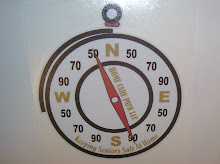Occasionally inpatient providers will encounter an over involved care giver. A well intentioned family member sometimes can over do their care giving role with out even knowing it. The care giver invests so much of their time and labor coworkers and family begin to question work and home relationships.
Over involved care giving can become most evident when the patient's condition changes requiring additional help. Familiar statements of a person over involved in their role as care giver can include:
1. I know the patient better than anyone.
2. I can tell what the patient is thinking.
3. I have to be here with the patient.
4. The nurse and doctor do not get it.
5. I will just move this patient if we do not get what I want.
The unconscious acts of an over involved care giver are often directed at trying to (not realistic) get the providers to return the patient to a level of care when just the patient and care giver could safely function on their own. As the chronic disease process progresses requiring more help to manage the patient in the community, the over involved care giver is also greiving the loss.
The difficulty with chronic long term progressive disease processes is they cannot be fixed, only managed. As the disease process progresses (which they all do) the management can involve the need for more help and a lot of change. This can challenge an over involved care givers perception of control.
Inpatient providers will call in question the statements of an over involved care giver when they do not match up with the patients presenting symptoms. When the symptoms retreived through the scientifically supported medical assessment process do not equate to the over involved care givers verbalizations, tactful education follows.
The Centers for Medicare and Medicaid initiative to reduce hospital readmissions will involve educating the over involved care giver. The repetitive trek in to the emergency room that results in no hospital admission but instruction to follow up with your primary medical doctor. The admission to the hospital under observational out patient status with no treatments or medication changes.
The work in caring for a patient with an over involved care giver is teaching the care giver where the patient is in the disease process and what is really needed to manage the change in condition. The care communicated during the discussions is to help the over involved care giver return to the waiting self.
PATH ALONG is an original Wisconsin model that connects in patient providers to community staff who support the patient during health system transitions. PATH ALONG is an evidence based model with three defined services to help the hospitalist fulfill their continuity of care role.
Check out the web site with free access point and click
http://www.homecarepath.com/Pages/PRESSRELEASEOriginalWisconsinModelToReduceHospitalReadmissionRates.aspx
Monday, December 17, 2012
Subscribe to:
Post Comments (Atom)

No comments:
Post a Comment